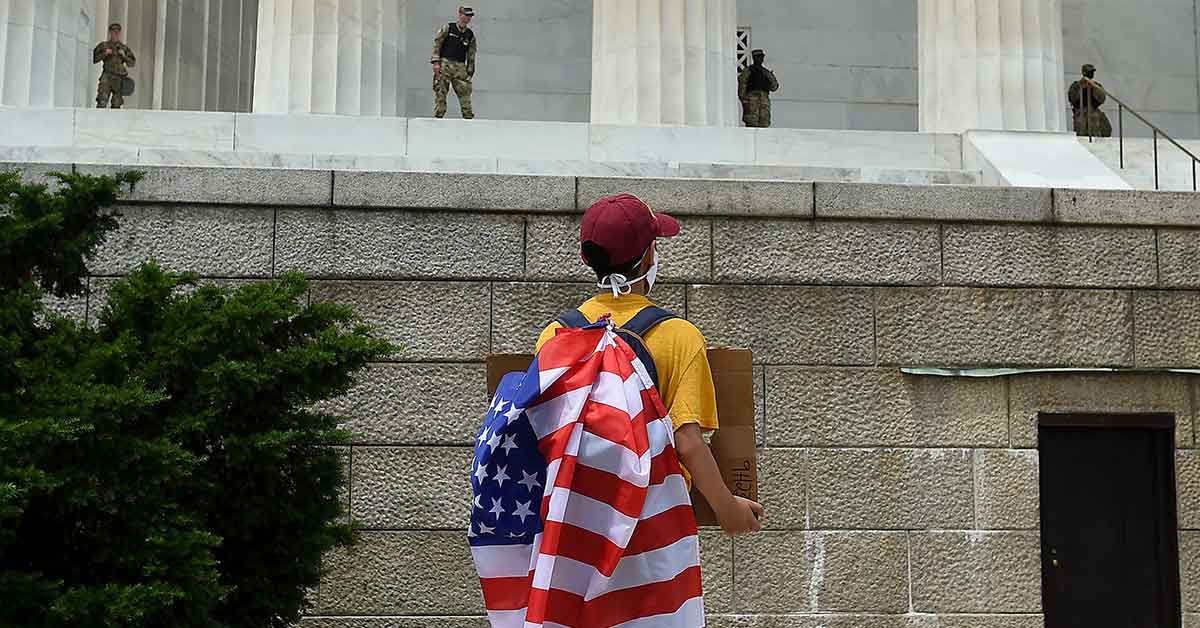It has been a calamity for the United States (US) that, when two national tragedies – the COVID-19 crisis and the country’s legacy of racism – collided this spring, the occupant of the White House was an unstable person, totally unfit to govern.
President Donald Trump’s inability to cope with the pandemic has so far led to more than 112,000 deaths, one of the world’s highest per capita mortality rates for COVID-19, with the coronavirus still spreading to areas not previously hit. The public-health crisis has also triggered the worst economic downturn in the US since the Great Depression of the 1930s.
As subsequent events have unfolded, it is no exaggeration to say that the American experiment – 244 years old next month – is in serious danger, even more so than during the constitutional crisis caused by the Watergate scandal of the 1970s. The pandemic coincided with the latest in a long series of race-related outrages, and it has caused the country to explode.
Millions of cooped-up Americans watched, over and over, the cold-blooded killing of an unarmed, handcuffed black man, George Floyd, by four Minneapolis police officers. One, Derek Chauvin, casually kneeled on Floyd’s neck for nearly nine minutes until he lost consciousness; two others sat on Floyd’s back, further depriving him of oxygen; the fourth looked on, keeping appalled bystanders at bay as Floyd, struggling to live, cried out, “Please, I can’t breathe.”
Floyd’s killing shocked the country’s conscience. It provided Americans with an unambiguous picture of the true meaning of “police brutality.” After being shut in for weeks by lockdowns and social-distancing rules, people had considerable pent-up energy, which the recordings of Floyd’s death unleashed. Protests began in Minneapolis the next day and quickly spread across the country. Tens of thousands of people of all races and ages participated.
Demonstrators who engaged in violence, looting, and property destruction (including setting police cars on fire) were catnip for Trump, whose brand of politics depends on stoking his supporters’ outrage. His Nixon-like “law and order” rhetoric aimed to erase the distinction between the violent protesters and the far larger number of peaceful ones.
US Attorney General William Barr was, as always, ready to help Trump exploit the situation and accrue more power. Because Washington, DC, is not a state, Trump and Barr had leeway to impose their own solution. They used various state national guards, the military-like arms of federal agencies, and, unnervingly, some unidentifiable forces. Washington became an occupied city.
Trump pretends to be a tough guy and is authoritarian to the bone. Yet, as the protests swelled outside the White House, he decided, or so he claimed, that it was time to “inspect” the president’s mammoth underground bunker. The White House itself had already become a bunker: during the chaos after Floyd’s murder, the height of the fence surrounding its grounds was nearly doubled. True to his inclination to stir things up, Trump tweeted that, had demonstrators breached that fence, “they would have been greeted with the most vicious dogs, and most ominous weapons, I have ever seen.”
The deeply disturbing use of force to clear peaceful demonstrators from Lafayette Square across from the White House – a violation of their rights for which Barr initially took credit – also shocked the national conscience. Trump’s less-than-brilliant advisers – most prominent, his daughter Ivanka and son-in-law Jared Kushner – had concocted a political stunt that involved Trump walking across the square to the boarded-up St John’s church, the basement of which had been set on fire. But they failed to think through what he would do when he got there. Trump awkwardly waved a Bible, sometimes holding it upside down, for photos that only made him look foolish.
Moreover, Trump’s advocacy of flooding America’s cities with active-duty US troops was met with widespread antipathy and scorn. A cascade of former high-ranking military officials, including James Mattis, the retired Marine general who was Trump’s defense secretary until last year, openly denounced the president. Mattis, who described himself as “angry and appalled” at the idea of using the troops to put down the demonstrations, said Americans were “witnessing the consequences of three years without mature leadership.”
But those who saw in such statements the unravelling of Trump’s presidency didn’t factor in Republicans’ continued fealty. Faced with the choice between Mattis and Trump, nearly all elected Republicans stuck with the president. They had defended him for so long, shared so many of his views, and become so dependent on him and his donors that they weren’t ready to break with him, despite knowing that current polls suggest he might go down in November’s election – and take them down with him.
While the national uprising against racist policing will lead to some reforms, such as improved training and the prohibition of choke holds and neck restraints like the one that killed Floyd, rethinking the role of the police alone, no matter how radical the results are, cannot eliminate racism, the great stain left on America by the founders’ compromise with slavery.
Governments can do nothing about the quotidian offenses of living as a black person in America – the empty taxis that refuse to stop, being mistaken for employees in supermarkets, the myriad intentional and unintentional insults. Many now in the streets won’t be satisfied unless the result of this national spasm is improved schools, health care, and job opportunities for minorities – a fair shake for black people. What will happen when America once again falls short of honouring its professed values?
Related Articles:

